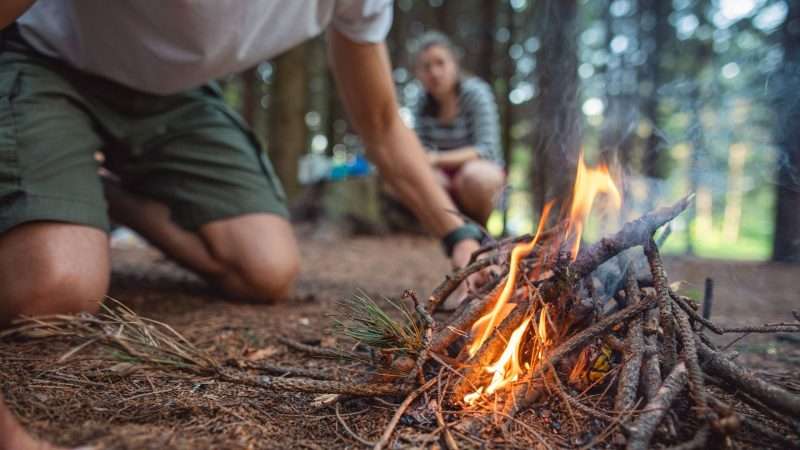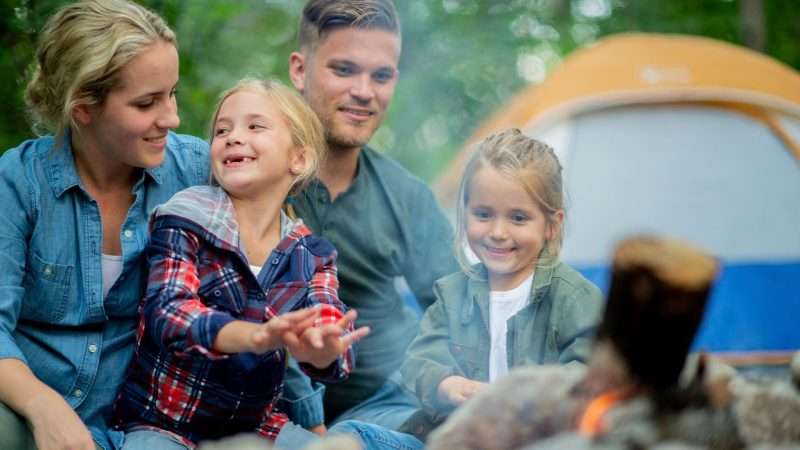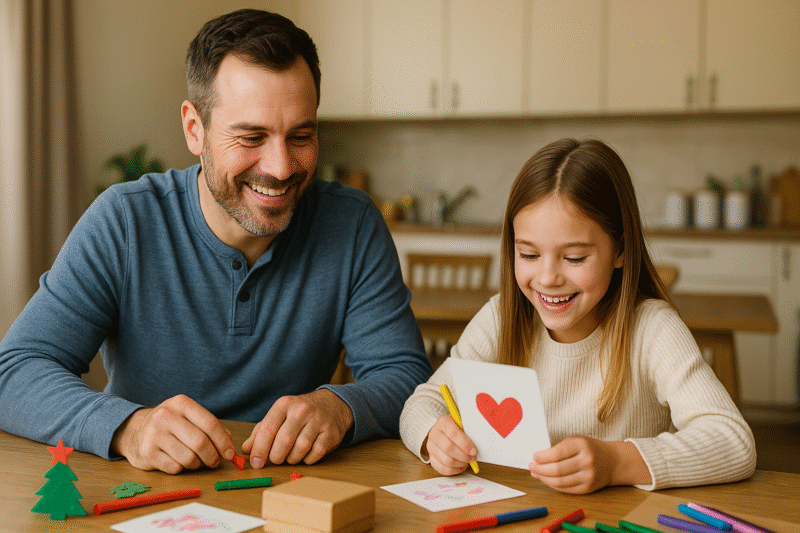The great outdoors is such a brilliant place for families to spend time. And there is so much to explore in the UK. But how are your outdoor survival skills? Could you pass on useful advice to your children about how to look after themselves in the wild?
We’ve pulled together some advice for outdoor survival skills that kids (and their parents) should know if you are planning to go wild and camp out in the countryside.

Outdoor survival skills
1. How to build a fire
Perhaps one of the most obvious tricks is teaching your child to build a fire. It seems like a simple act, but many of us fail when it comes to creating it given the resources you have to hand in the wild. Even if we have matches or a lighter, there are certain tricks that are vital to ensure you build a safe, consistent and usable fire.
Firstly, take time to teach your child the basics of fire. It needs oxygen, heat and fuel. Work together to make a spark, using two sharp pieces of flint, or glass or mirror to reflect light from the sun to create condensed heat.
Secondly, introduce a fuel, such as dry grass, paper or cardboard. It’s really important to ensure the less dense fuel that burns, such as twigs and thin paper, is kept at the bottom of the fire, and the larger logs are propped on top. Not only will this ensure a safer fire, but it will last longer and generally burn more effectively.
Fires can, or course, be very dangerous, so make sure you supervise this activity. Always build fires away from trees or other flammable objects, finding a suitable well-ventilated non-enclosed space.
2. Identify useful – and dangerous – plants
Teaching your child all of the suitable plants that are edible seems quite a feat when confronted with the vast array of flora. However, teaching them what not to eat is even more important, as outdoor survival skills go.
Familiarise yourself with what deadly and woody nightshade plants and their berries look like, for example. If you ingest them, they can be very poisonous. Look up other dangerous plants too and make sure you study them carefully as a family so you are prepared for your adventure.
As for other plants, research which you can eat and which provide herbal benefits. Lavender, aloe vera and dock leaves, for example, are natural antiseptics.
3. How to find safe shelter
Finding shelter can be difficult. But there are certain tricks you can teach children to look for when out in the wild, when you need somewhere to sleep, rest or pitch a tent. The most important aspect is to ensure you are protected from rain and moisture. Elevating your bed off the ground is key to this. Use trees and caves for shelter too.

4. How to climb a tree
This is one of those outdoor survival skills where your child will have the upper hand on you. When was the last time you climbed a tree? It’s likely your child has done it much more recently.
Climbing trees can be a really important survival tactic outside, to gain fruit and shelter and protect yourself from dangers on the ground. The most important aspect to learn when climbing trees is safety; ensuring the tree branches are not rotten and that they can hold the weight of people climbing. Trees that are rotten display signs of leaf discolouration, irregular bark and obvious signs of decay.
5. How to find clean drinking water
We cannot survive without water. The most important tip to teach your children is that water always flows downhill. The most obvious bet is finding streams, rivers and lakes, especially at the bottom of valleys.
Animals also know where clean water is, so teach your children to look out for wildlife or animal tracks leading to water sources. Also, as a general rule, it’s wise to teach your child to only drink flowing water, as still, stagnant water has much higher risk of contamination and bacteria.
6. How to read the sky
Familiarise yourselves with the iterations of the sky, and what they mean throughout the day. This includes measuring the time through the position of the sun, searching for signs of approaching storms, or running through the cloud formations.
Tracking the sun also helps you identify east and west and that is vital for aiding with directions.
7. Basic first aid
It’s surprising how few children are taught the basics on how to stop bleeding, one of the most important aspects of administering first aid in an emergency situation. Teach your child the three aspects if they are faced with bleeding; covering the wound with a gauze or cloth, applying direct pressure to stop the blood and not removing the cloth. The cloth will help clots in the blood to form, which prevents the flow.
And once you’ve done all of that, you have well and truly succeeded in teaching them outdoor survival skills. You’ll have a baby Bear Grylls on your hands and can feel much more assured when they venture out on great escapes.







